When deciding where to list your rental property in Toronto, it’s important to weigh both paid and free options. Each platform offers distinct advantages, and the right choice depends on your budget, desired exposure, and the features you value most.
To help you make an informed decision, we’ve compiled a list of the top seven websites for listing your Toronto rental property — from local-focused platforms to nationwide networks.
Before diving into the list, it’s worth noting that each platform serves a slightly different purpose. Some focus on volume and visibility, while others emphasize quality leads or ease of management. Understanding these differences will help you choose the right one for your rental strategy.
7. RENTCANADA – Canada’s Apartment Rental Guide
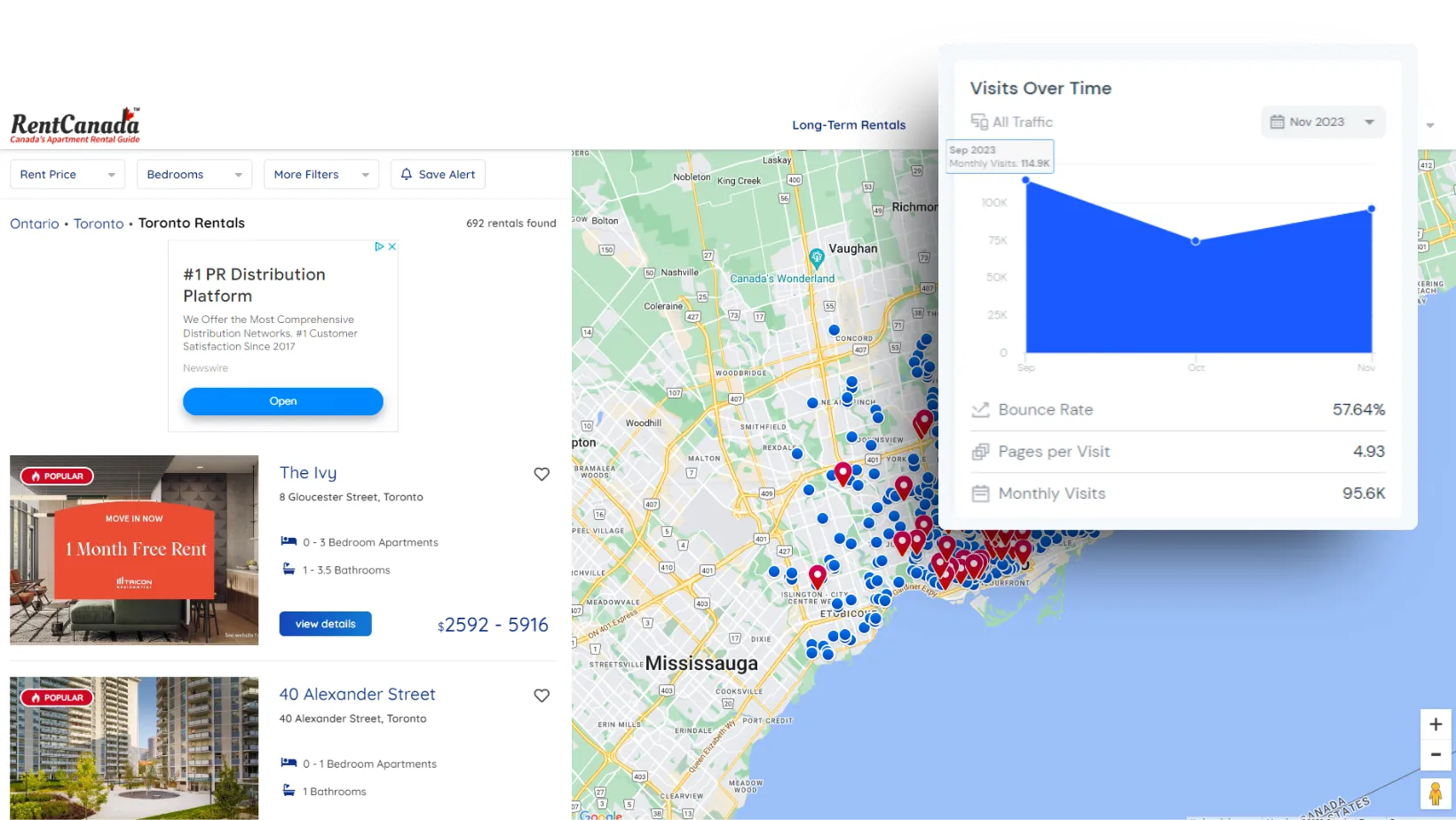
RentCanada focuses exclusively on rental listings across Canada. It connects landlords with potential tenants through detailed property descriptions and a user-friendly interface.
Key Features and Considerations
- Specialized in rentals, providing a focused platform.
- Allows for comprehensive property descriptions.
- It has limited exposure, resulting in limited visibility for listings.
Fee: To have your listing displayed on RentCanada, you are required to purchase a listing package on RentBoard.
Website Potential Reach: 95K monthly visits (average)
6. RENT BOARD – Toronto Rental Listings
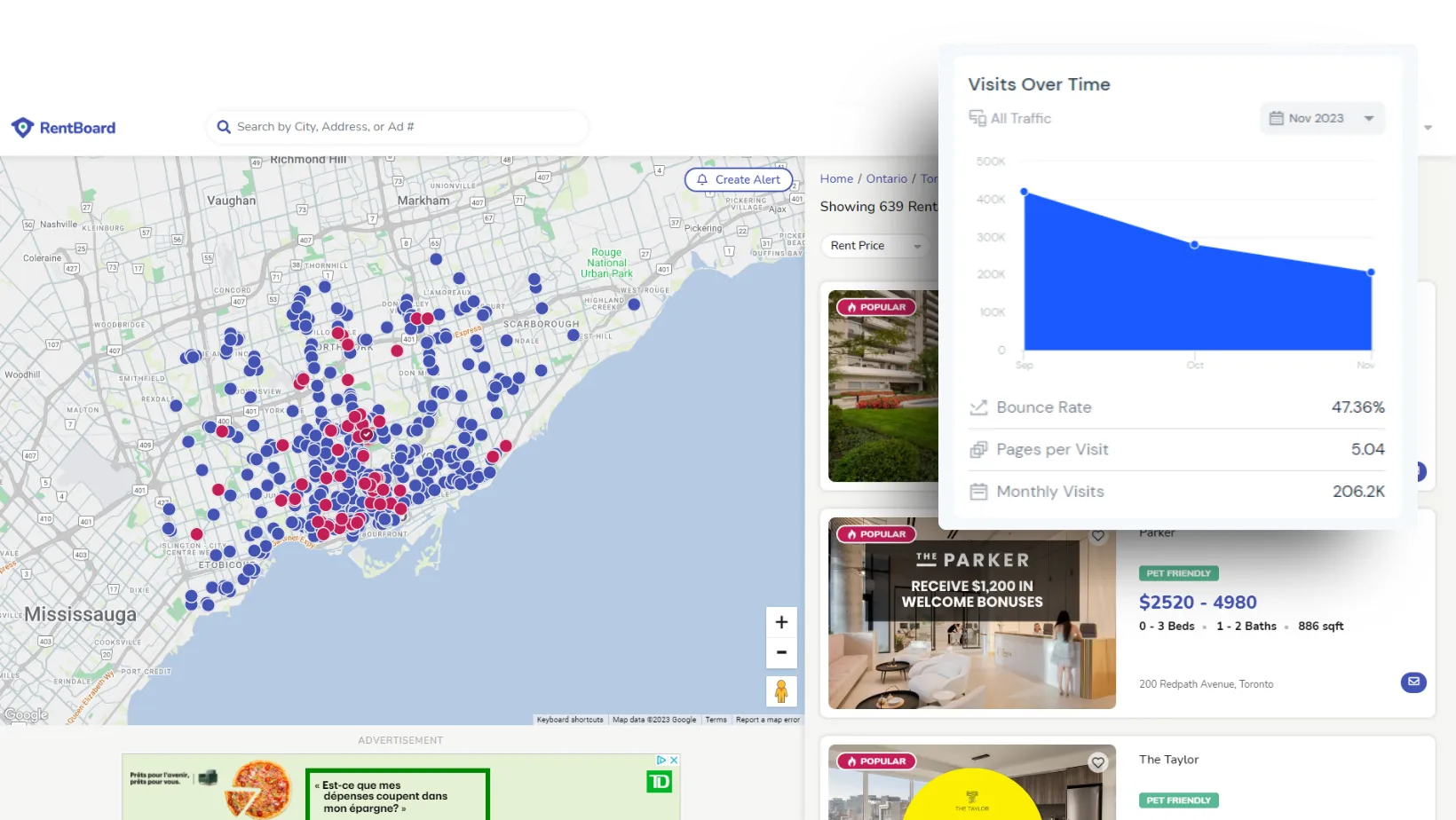
RentBoard is another Canadian platform that focuses on connecting landlords and tenants. In addition, landlords who prefer advanced search filters may find RentBoard appealing.
Key Features and Considerations
- Advanced search filters for a more refined property search.
- Listings may be posted on partners’ websites.
- No free options are available, which may result in higher costs, particularly if your property doesn’t attract immediate interest and remains on the platform.
Fee: Paid. The platform operates on a credit system, charging 1 credit per day, with a starting cost of $33 for 30 credits. Featuring a listing uses 10 credits upfront.
Website Potential Reach: 206K Monthly (average)
However, if you want a no-cost option with wide reach, Craigslist is still a classic choice.
5. CRAIGSLIST – Apartments / Housing for Rent
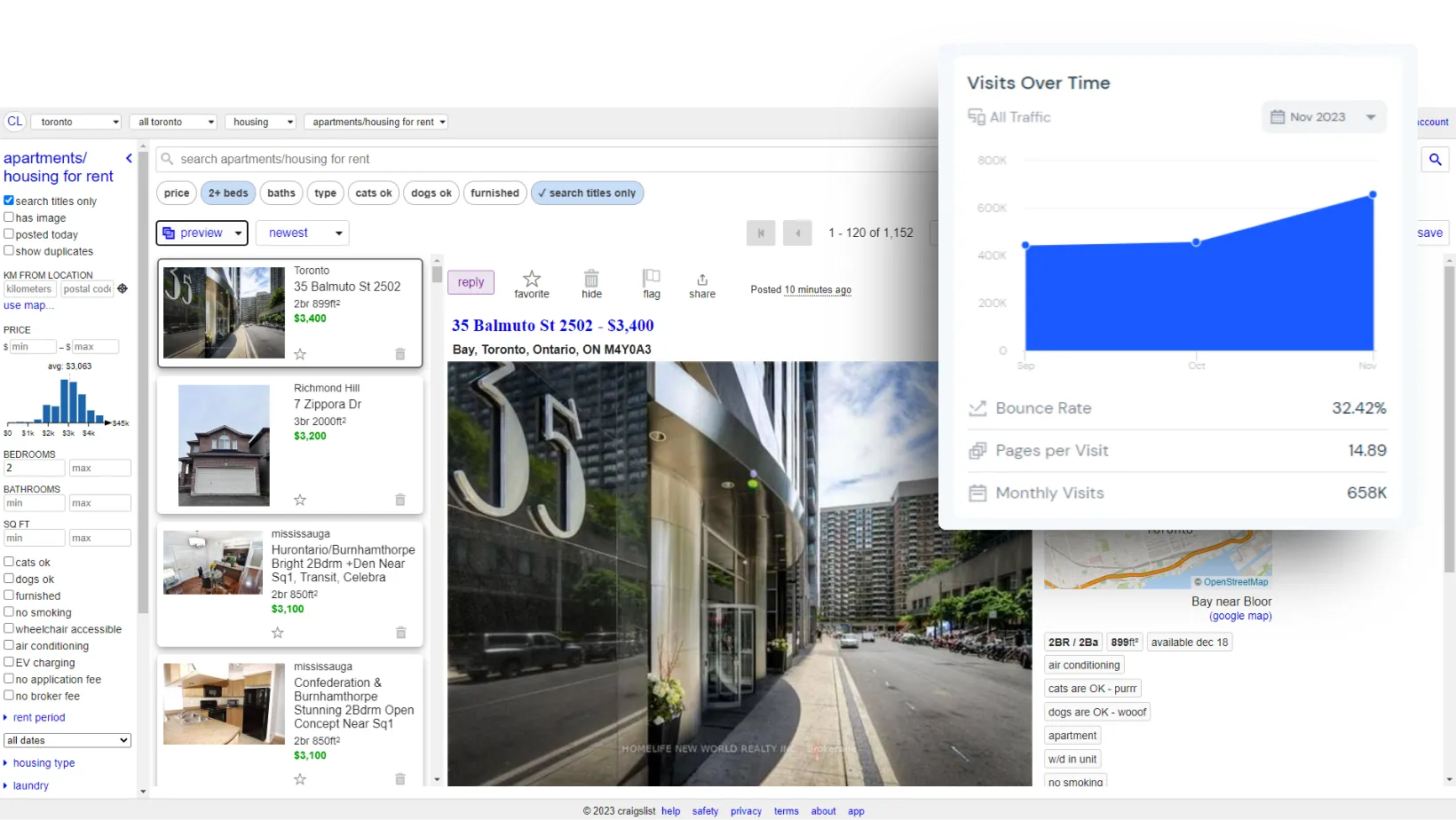
Craigslist remains one of the world’s most popular classified sites. Because it allows free listings, it’s accessible and cost-effective for landlords testing the market.
Key Features and Considerations
- Easy to navigate interface.
- Not as widely recognized for rentals as some other websites. Potential users may not be aware of the rental opportunities available.
- Susceptible to attracting a significant number of individuals who may not be genuinely interested or serious.
Fee: Free
Website Potential Reach: 658K Monthly (average)
Meanwhile, landlords who want mass visibility in Canada often turn to Kijiji.
4. KIJIJI – Long Term Rentals
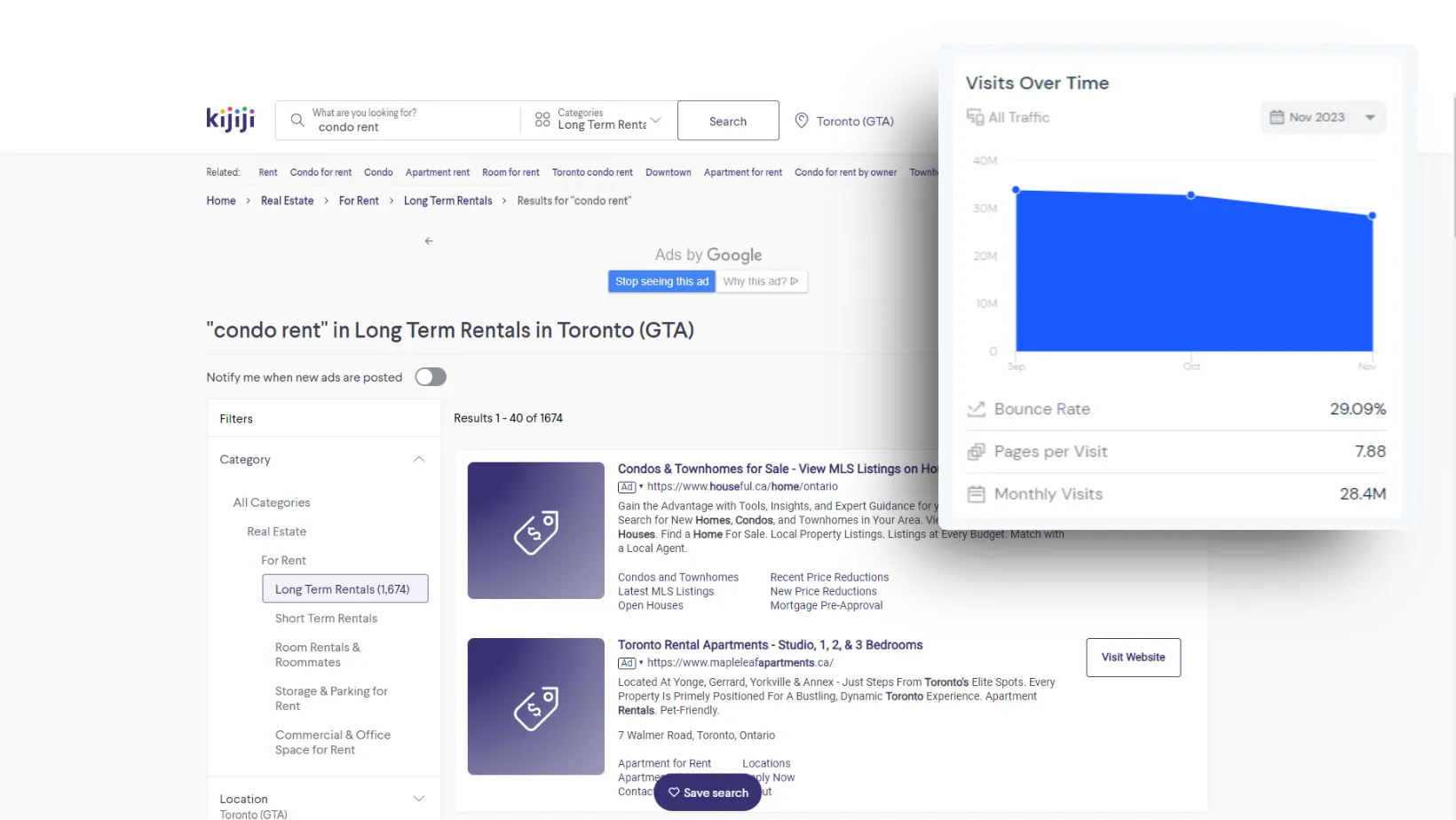
Kijiji is among Canada’s most visited online marketplaces. It offers both free and paid options, making it one of the most flexible choices for landlords.
Key Features and Considerations
- Popular and widely used platform.
- Allows for detailed property descriptions and numerous images.
- High volume of competing listings on the site.
- Not easy to use, can be time consuming.
Fee: Free and paid listing options with a limit of 2 free listings (real estate). Additional listings can be acquired for $29.95 per unit, valid for 31 days. Sponsored options available starting at $7.95 for 7 days.
Website Potential Reach: 28.4M Monthly (average)
As we move from broad classifieds to more specialized tools, the next few platforms focus on streamlined user experiences and digital-first design—ideal for landlords who prefer a modern, tech-driven approach.
For example, Zumper appeals to younger renters who prefer map-based digital searches.
3. ZUMPER – Toronto Apartments for Rent
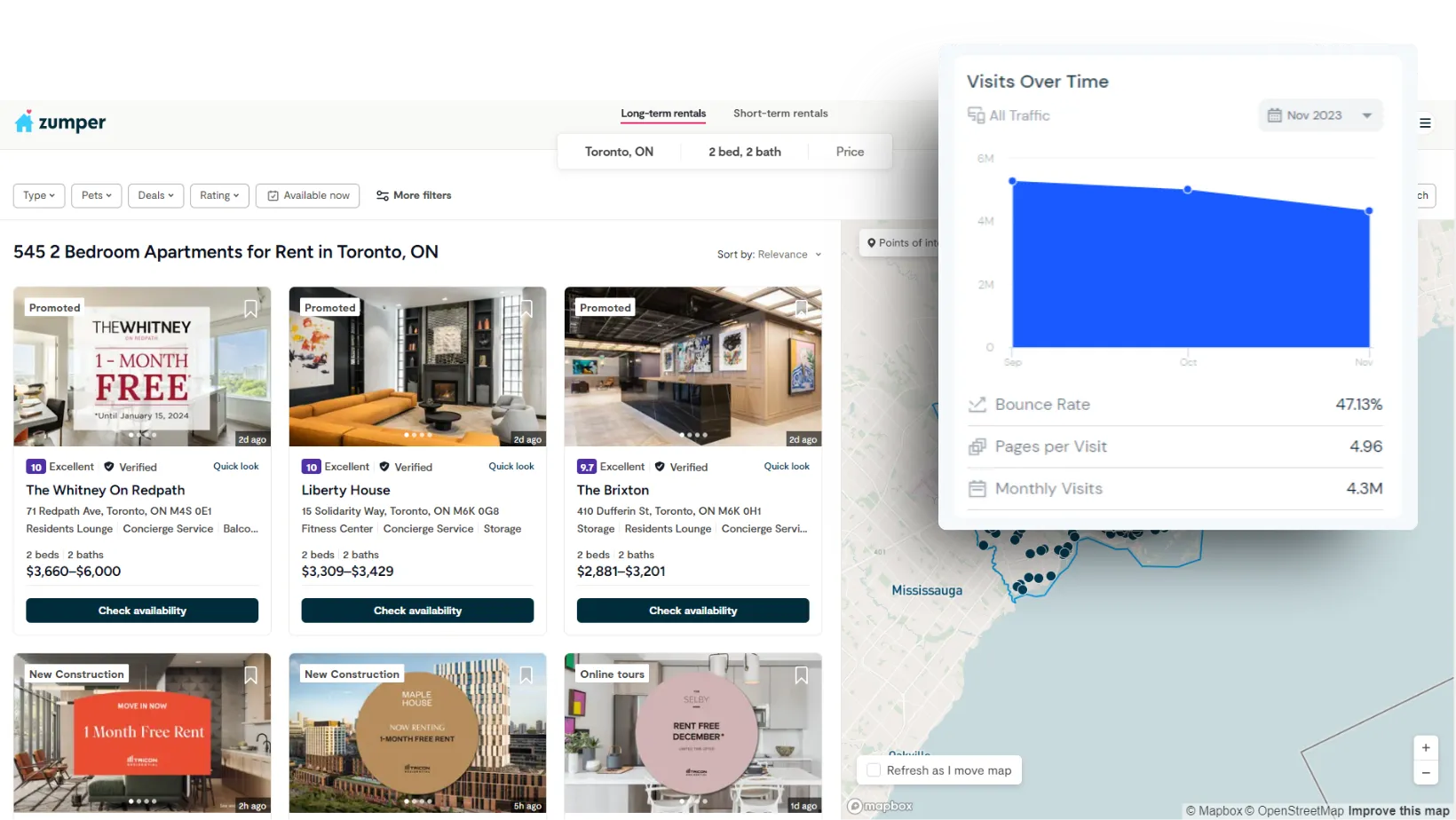
Zumper provides a clean interface and a map-based search tool, making it easier for renters to browse by location. It’s especially popular among younger renters who prefer digital-first platforms.
Key Features and Considerations
- Easy to navigate interface.
- Listings may be posted on partners’ websites.
- You can stipulate minimum applicant criteria.
- Susceptible to attracting a significant number of individuals who may not be genuinely interested or serious.
Fee: Basic listings are free, and there are optional paid features for enhanced visibility, starting at $99 per month for 10 listings.
Website Potential Reach: 4.3M Monthly (average)
Similarly, PadMapper offers a visual experience that simplifies the search process.
2. PADMAPPER – Toronto ON Apartments for Rent
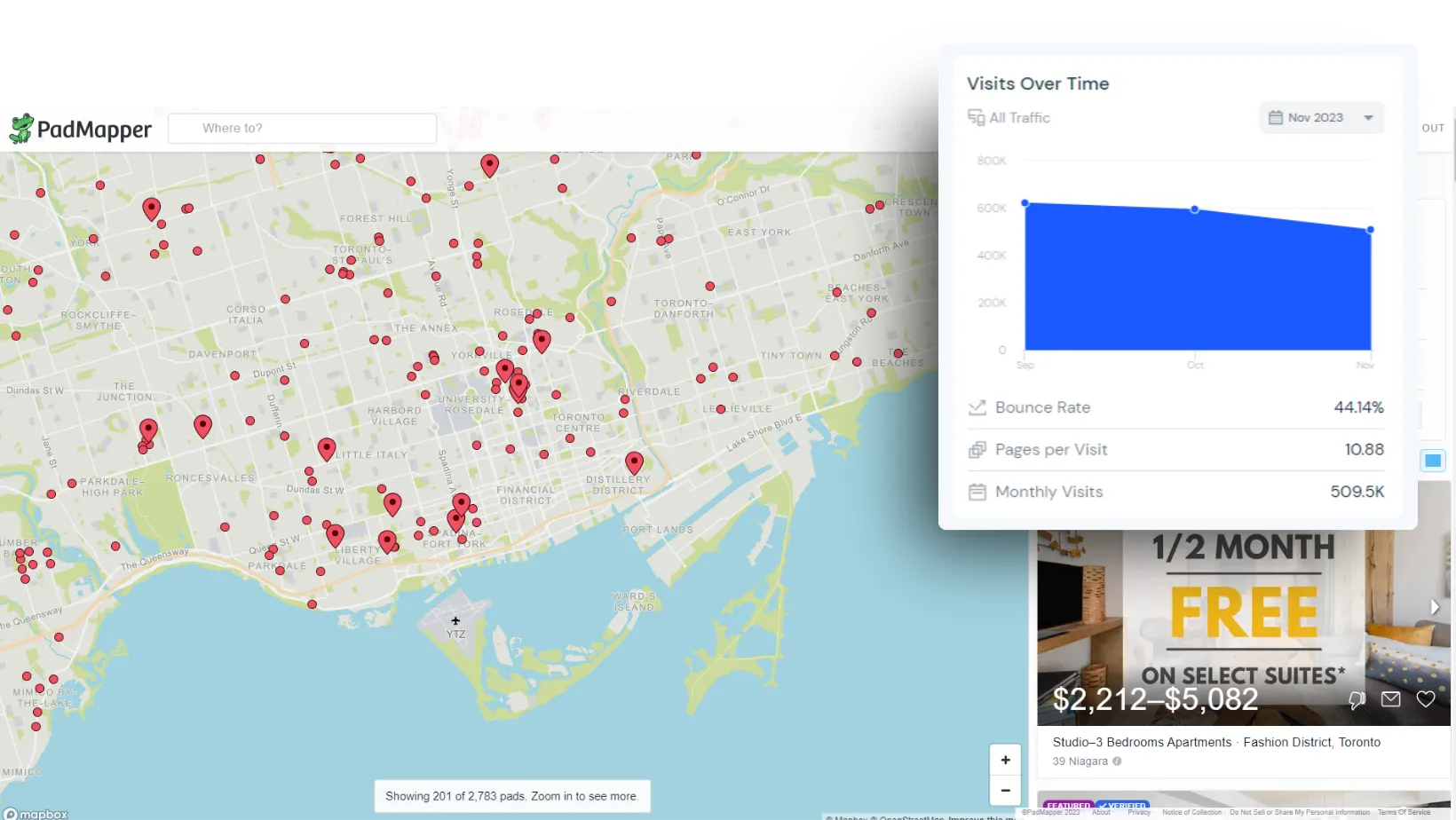
PadMapper aggregates listings from multiple websites, giving renters a comprehensive overview of what’s available in their preferred area.
Key Features and Considerations
- Map-based interface for easy location-based searching.
- Listings may be posted on partners’ websites.
- Susceptible to attracting a significant number of individuals who may not be genuinely interested or serious.
- Limited customization options for landlords.
Fee: Free for basic listings, with paid options for enhance visibility.
Website Potential Reach: 509K monthly (average)
Finally, for landlords who prefer a hands-free approach, LandLord.net offers a complete, managed service.
1. Landlord.net – LandLord Listings
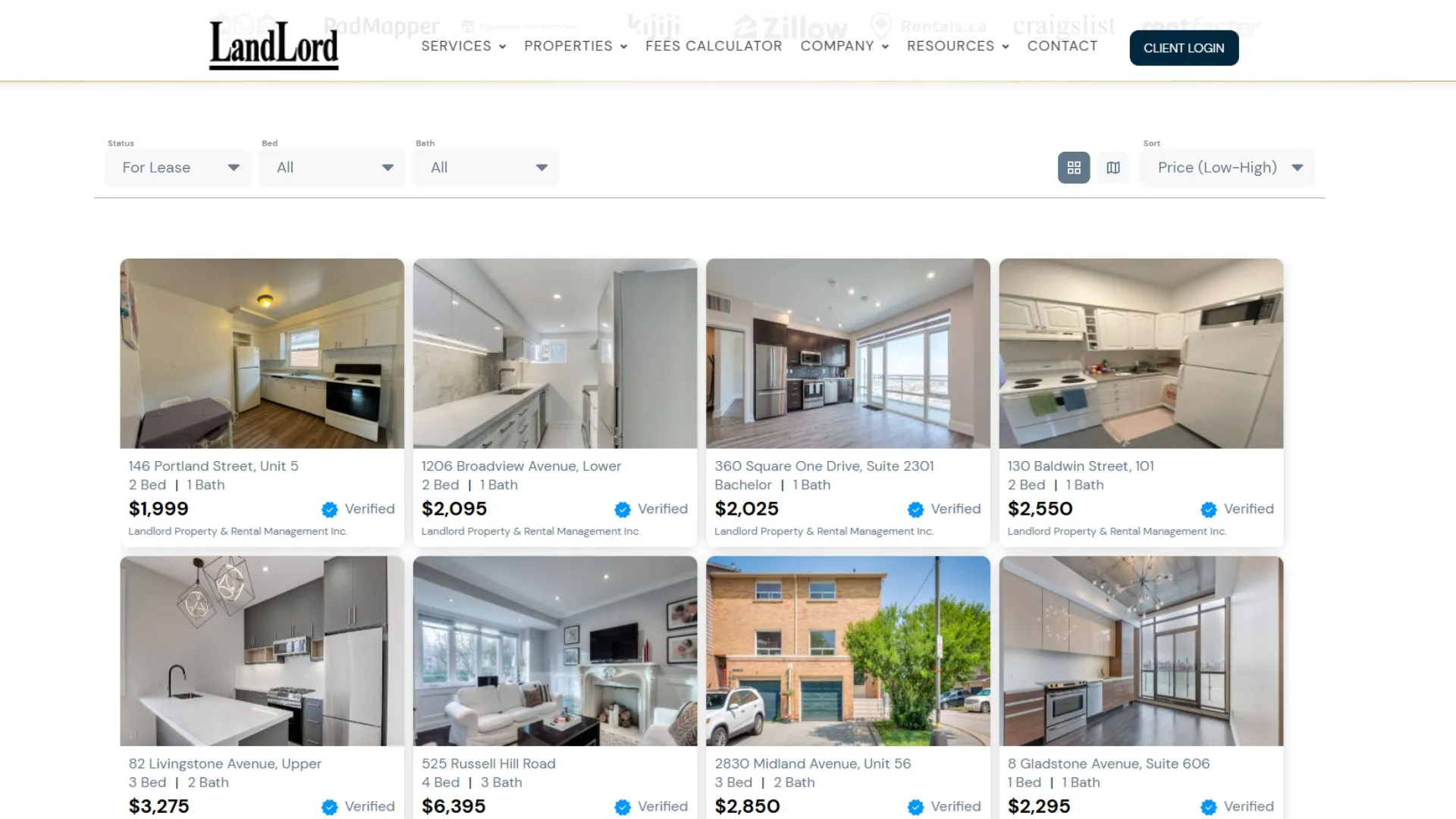
LandLord provides a fully managed listing experience for both rentals and properties for sale. What makes this platform especially effective is its automatic syndication: once LandLord posts your property, it appears on major websites like those listed above.
Therefore, clients don’t need to upload, renew, or manage listings themselves. A professional leasing agent handles everything—from marketing to tenant screening. You simply review qualified applicants and select your preferred renter.
Key Features and Considerations
- Efficient listing management.
- Wide exposure across multiple websites.
- Professional leasing support from leasing agents.
- Proven tenant selection and screening process.
- Thorough background checks.
- Summary of applicant is sent to your email for approval.
- Less involvement for landlords as LandLord.net manages the entire listing process on their behalf.
Fee: One month’s rent
Potential Reach: Over 40 million monthly (average)
Overall, choosing the right platform depends on your goals and the level of involvement you want.
Need Help Managing Your Rental Property?
Ultimately, choosing the right platform depends on how hands-on you want to be. Some landlords prefer managing every detail themselves, while others value convenience and professional support.
Listing your property is just the first step. Managing tenants, maintenance, and rent collection requires time and experience.
If you’re ready for a stress-free approach, connect with our team today and learn how our full-service property management can help you fill vacancies faster and protect your investment.
Frequently Asked Questions About Listing Rentals in Toronto
1. What is the best website to list my rental property in Toronto?
It depends on your goals. If you want maximum visibility, platforms like Kijiji, Zumper, and PadMapper perform well. However, if you prefer a hands-free, professionally managed approach, LandLord.net distributes your listing across multiple sites and handles tenant screening for you.
2. Can I list my rental property for free?
Yes. Websites like Craigslist, PadMapper, and the free tier of Kijiji allow no-cost postings. However, paid or managed listings often attract more serious tenants and rent faster.
3. How can I make my rental listing stand out?
Use high-quality photos, include clear pricing, and highlight unique features such as parking, pet policies, or renovated interiors. Adding a detailed description helps potential tenants picture living there.
4. Should I use multiple platforms to list my rental?
Absolutely. Cross-posting increases visibility, especially in competitive markets like Toronto. Managed services such as LandLord.net automatically syndicate your listing to several major sites at once.
5. What’s the difference between short-term and long-term rental listings?
Short-term rentals are typically under 30 days (e.g., vacation stays), while long-term rentals usually last 12 months or more. Platforms like Zumper and PadMapper focus mainly on long-term housing.
6. How long does it usually take to rent out a property in Toronto?
It depends on market conditions and location. In general, well-priced rentals in desirable neighbourhoods can lease within one to three weeks. However, listings with poor photos or unclear details may take longer to attract qualified tenants.
7. Should I hire a property management company to handle my listings?
Yes — especially if you want to save time and avoid tenant screening or maintenance headaches. A professional property management company can list your property on multiple platforms, manage showings, screen applicants, and ensure your rental complies with Ontario’s regulations.
8. What information should I include in my rental ad?
Your ad should list rent amount, unit size, number of bedrooms and bathrooms, included utilities, and key amenities. Additionally, mention any pet policies (condo bylaws), parking availability, and move-in date to save time filtering applicants.
9. Are professional photos really necessary?
Absolutely. Listings with high-quality photos receive significantly more inquiries. Moreover, clear and bright photos build trust and make your property appear well-maintained, encouraging faster leasing.
10. What’s the safest way to communicate with potential tenants?
Use verified messaging systems within the platform whenever possible. Alternatively, if you manage the listing yourself, always verify the applicant’s identity before scheduling viewings or sharing personal information.



